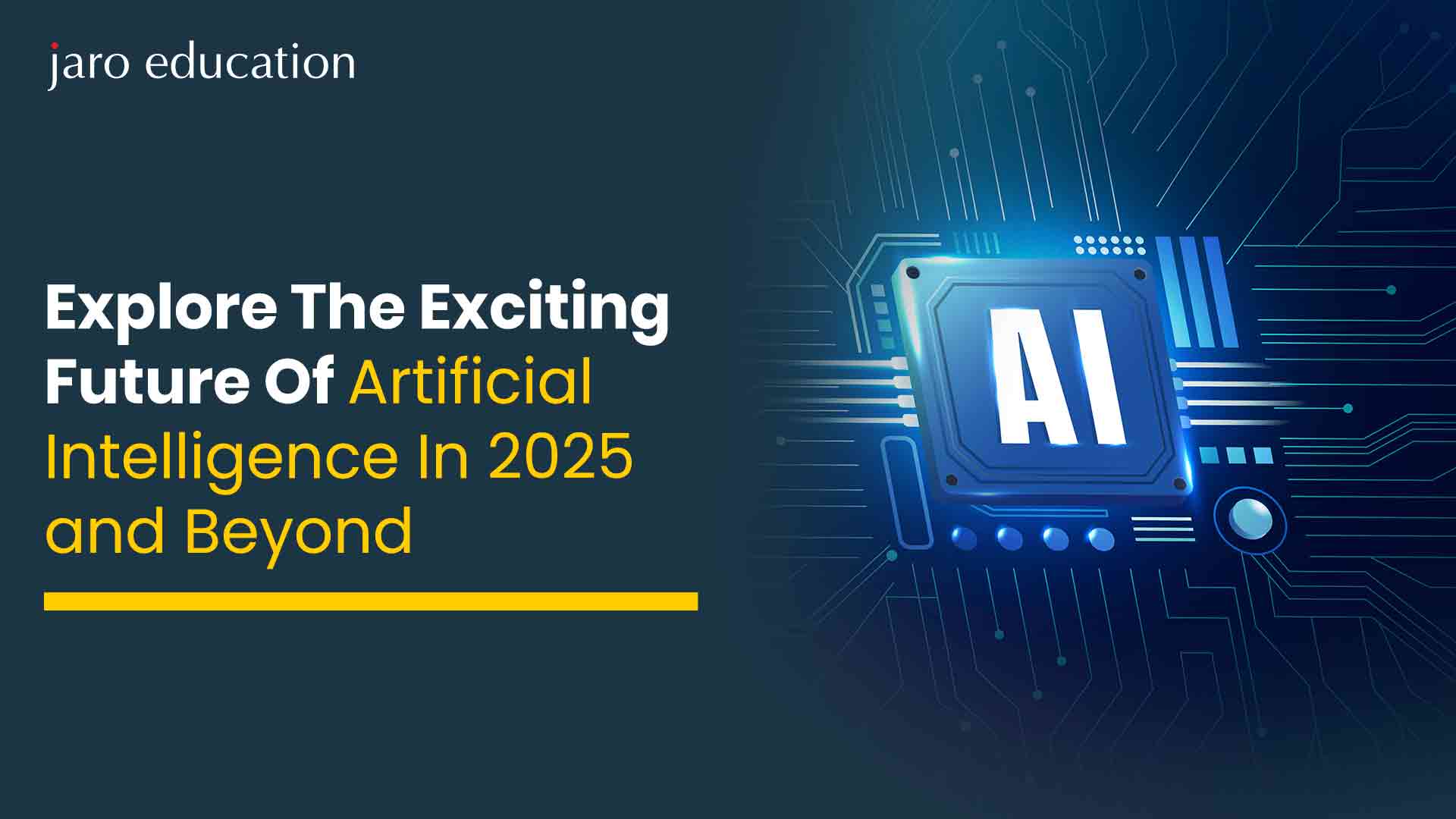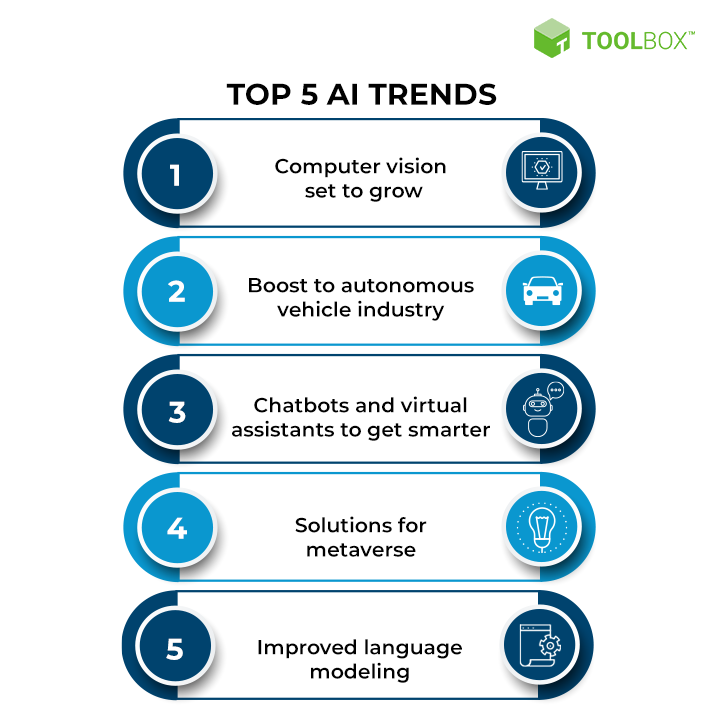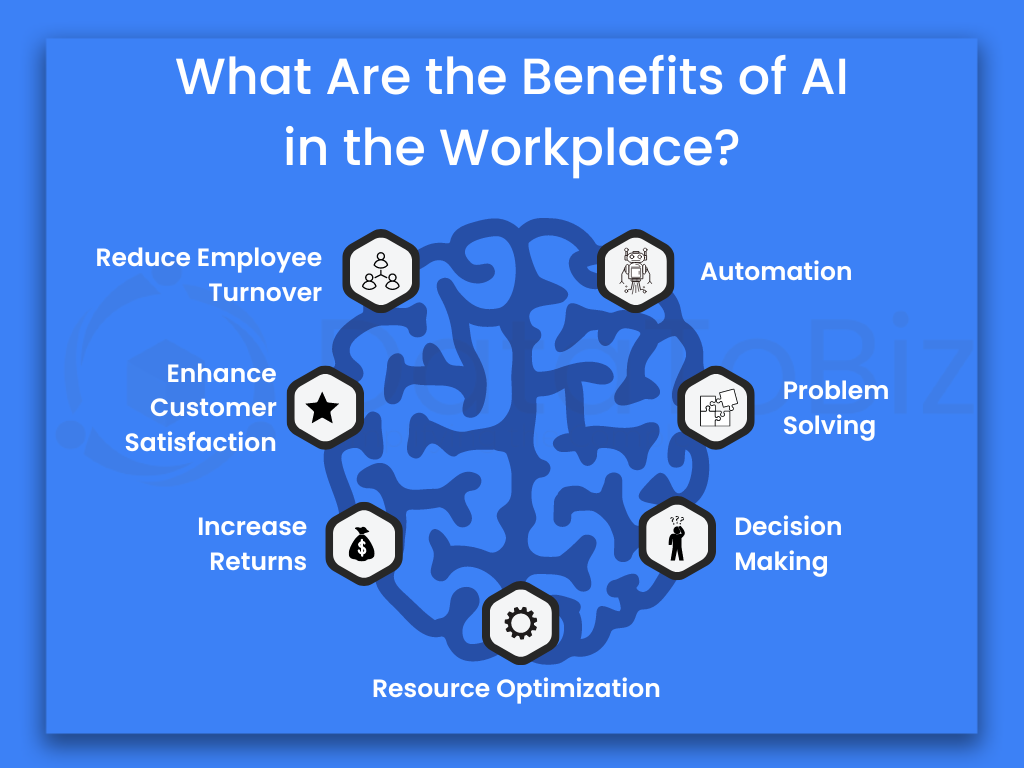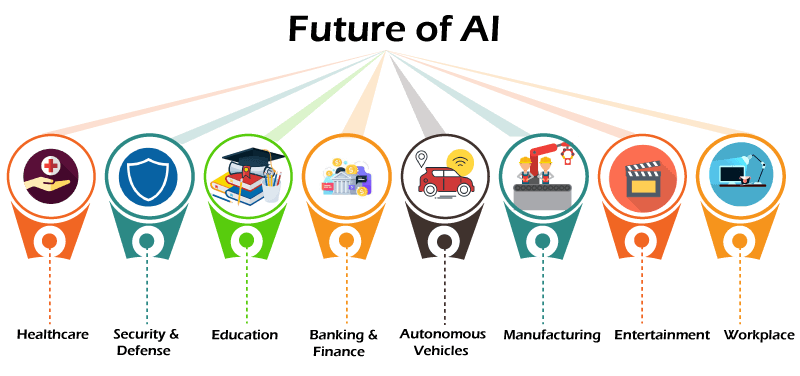Explore The Exciting Future Of Artificial Intelligence In 2025 and Beyond
Table of Contents

Artificial Intelligence is undoubtedly the most amazing concept that not only captures the imagination but also changes the way we think of technology today. In fact, AI’s role in society has become more significant by revolutionising industries, whether it is healthcare or finance, and transforming the way we live and work.
Thus, it has become very crucial to understand these evolving changes for both businesses and individuals who always want to stay ahead of the curve. In addition, the future of Artificial Intelligence technology has more benign potential, and this article will show it. Let’s explore the exciting evolution of artificial technologies and recent innovations. We will also focus on how one can build a thriving career in it.

*spiceworks.com
Exploring the Top 5 AI Trends in 2025
The future of artificial intelligence is unstoppable. As we are in 2025 now, the way we refine and implement these technologies will also change. Here are the top AI trending sectors that will remain here for decades.
1. Responsible AI: Towards Ethical and Fair Usage
The concept of Responsible AI is one of the game-changing trends that will surface in 2025. Without a doubt, AI is considered to be one of the most powerful developments we have today, and if it is not utilised ethically, it can be scary too. For example, AI is mainly used to create reliable and interpretable systems. Responsible AI maintains data privacy and ethical use.
It consists of the need for AI to have a sense of ethics, transparency, and absence of bias as it gets powerful and unfolds nearly completely across societal lines.
The future of artificial intelligence will begin to include more efforts aimed at privacy preservation, bias mitigation, and ethical placement of human interests. Increasingly, there will be stronger scrutiny of AI’s role in decision-making, holding developers accountable for transparency in AI models and producing explainable outputs.
2. AI-Augmented Development: Enhancing Creativity and Productivity
This is another important AI trend that will increase the adoption of AI for software development and coding. These technologies are used to streamline workflows, reduce human errors, and boost creativity. One such example is ChatGPT. This trend will allow developers to focus more on developing higher-level problem-solving programs instead of repetitive tasks.
A future of artificial intelligence where software is developed more quickly, with fewer mistakes, and more precisely to meet user expectations is promised by the use of machine learning models to support many elements of software engineering. AI will also be able to assist developers in running intricate test scenarios, or “what-if” scenarios, to assess performance and anticipate possible errors, in addition to producing portions of the code on its own. Thus, one of the major AI themes for 2025 is AI-augmented development.
3. Quantum AI: The Power of Quantum Computing Meets Artificial Intelligence
The next big leap in the future of artificial intelligence is set to happen with the merging of quantum computing and artificial intelligence. By 2025, this exciting trend—often referred to as Quantum AI—could transform the way we use technology.
Quantum computing offers positively immense power, probably surpassing the capacity of any standard computer. This means we can tackle incredibly complex problems at lightning speed, something conventional computers struggle with.
As for 2025, we can anticipate that the fusion of quantum computing with AI will pave the way for machine learning. For example, Quantum AI already shows Google’s early promise of what this combination can produce.
With Quantum AI, we could one day find ourselves solving calculations in fields similar to science, logistics, and finance that will render quite a few traditional problems impossible to solve.
4. Generative AI: Creativity at Scale
Generative AI is already ruling the world of content creation. From generating images to mimicking and even writing code, these technologies have made waves. So, in 2025 also, we will all be able to see the proliferation of such technologies, which will be beyond imagination. Whether it’s about composing music, generating 3D images, or even customising software, Generative AI will leave its impact in every sector. In fact, AI tools like the advanced versions of GPT will become more approachable. This will allow more individuals to use its features and create potential growth in innovation.
Furthermore, the education, finance, and healthcare sectors will also adopt these technologies to create personalised content. This transformation implies that people will have golden opportunities to create complex content and sort data effortlessly.
5. Enhanced Data Analytics With AI: Towards Automating Decision-Making
Data analysis through AI is another key trend in the future of artificial intelligence. This development not only helps businesses to make decisions but also helps them extract meaningful data, predict the future, and move a vast amount of data.
AI-powered tools will aid businesses in making real-time decisions that are mostly based on automated analysis. This also minimises human efforts in data processing, which further helps managers to be more focused on important strategies. This trend is going to transform industries like healthcare, retail, finance, and manufacturing by enabling operational decisions to be entirely automated.
AI in the Workplace
AI in the workplace will most probably change the way we work and collaborate. Artificial intelligence technology might increase productivity by automating repetitive tasks and providing valuable insights, allowing employees to commit their time and energy to more strategic and creative aspects of their jobs, encouraging innovation and satisfaction. In addition, AI-enabled tools will help improve decision-making by swiftly analysing extensive data while being accurate. AI integration will not only optimize the processes but will exuberantly allow new avenues of collaboration between humans and machines within a vibrant and efficient work sphere. Here are a few examples of AI in today’s workplace.
- Resume screening
- Voice assistants on your phone
- Machinery maintenance analysis and scheduling
- Customer service call centers
- Tumor location and illness diagnosis
- Google search engine
- Anti-collision technology in a company vehicle

*datatobiz.com
The Benefits of AI in the Workplace
The future of artificial intelligence is totally dependent on how people are utilising it and applying it in their workforce. Given below are some of the most common benefits of AI in today’s workplace:
- Performs Repetitive and Dull Jobs: Artificial intelligence is well- known for efficiently automating boring chores and helping employees to be creative. This ultimately helps them to be focused on the more rewarding, creative aspects of their careers.
- Helps in the Invention Process: Artificial intelligence is continuously making it easier for researchers to create technologies that can overcome current issues. By streamlining data analysis and enabling rapid prototyping, AI accelerates the development of innovative solutions that address complex challenges across various fields.
- Reduces Human Errors: AI accuracy has significantly contributed to minimising errors—practically to zero. This enhanced precision not only improves outcomes in industries like healthcare and finance but also boosts overall efficiency by reducing the need for costly corrections and rework.
- Handles Complicated Task: AI is everywhere. Whether we talk about Alexa or floor cleaners, AI-powered technologies are really known for performing critical tasks in any environment.
- It creates more jobs. AI increases the need for more programmers, robotics engineers, machine managers, and data investigators, albeit we’ll see the opposite of this in the drawbacks section.
What Industries Will Artificial Intelligence Change?
The future of artificial intelligence is the future of today’s commercial landscape. Let’s outline a few industries that will be changed by AI technology in the future.

*javatpoint.com
- Healthcare: In the healthcare industry, AI technology is used to diagnose illness and create a new way of combating dementia and cancer. AI technology in the future will further help doctors predict future diseases by analysing a patient’s health history with genetic data.
- Cybersecurity: In today’s digital era, cybersecurity has become a major concern; every day, millions of important data are leaked, and money is lost. However, the good news is that various AI technologies are being developed to detect online fraud and protect consumers.
- Marketing: Today, we all are experiencing customised content on social media sites. Whatever we talk about or search on Google will also start appearing on our social media sites. This is all done with AI-powered programmes that help to create complete ads or articles.
- Finance: In the finance sector, AI is transforming how we manage investments and assess risks. Automated trading systems use AI algorithms to analyse market trends in real time, allowing for quicker and more informed decisions. Additionally, AI enhances fraud detection by recognising unusual patterns in transactions, ensuring greater security for financial operations.
- Transportation: The transportation industry is on the brink of a revolution with the introduction of AI-driven technologies. Autonomous vehicles are set to change how we travel, promising increased safety and efficiency on the roads. AI will also optimize logistics and supply chain management, making transportation more streamlined and responsive to real-time demands.
Do You Want to Be a Part of the Future of AI?
- Advanced Certificate Programme in Machine Learning, Gen AI & LLMs for Business Applications – IITM Pravartak Technology Innovation Hub of IIT Madras
-
- Live Online Teaching by the Faculty of IIT Madras
- 2 Days of Campus Immersion (optional)
- Digital Markstrat Simulation
- Certificate of Completion from IITM Pravartak
- Professional Certificate Programme in Data Science for Business Decisions – IIM Kozhikode
-
- Certificate of Completion from IIM Kozhikode
- Gain Lifelong Executive Alumni status
- Learn from Eminent IIM faculty and Industry Experts
- High-Impact Learning: Industry Case Studies, Practical Insights
- Acquire know-how ‘Data Science’ Tools and Techniques
How Can Jaro Education Help You?
Jaro Education, a leading online higher education and upskilling company, assists individuals with career guidance and counselling to lead to a better future. The company is highly known for providing a platform where one can build a great professional network and get dedicated academic support. For most of the courses offered by the prestigious IIT and IIM, the Jaro acts as a marketing and technology partner.
Furthermore, for the programme offered by IITM Pravartak Technology Innovation Hub of IIT Madras, Jaro Education offers Jaro Expedite – Career Booster benefits that include:
- Resume Building: Help to meticulously design and refine resumes that meet corporate standards.
- Virtual Profile Optimisation: Provide tailored guidance for improving virtual profiles like LinkedIn to ensure maximum visibility and build meaningful connections with industry leaders.
- Career Enhancement Sessions: With our exclusive Jaro Connect platform, you have access to boot camps and masterclasses on the latest industry trends.
The Bottom Line
Now, you must have understood how the current evolving trends in artificial intelligence are going to reshape nearly every industry. From healthcare to finance and even marketing, the future of artificial intelligence is going to expand and evolve continuously. Whether you are a business leader or a consumer, staying informed about these trends will help you prepare for the future of AI, and the best way to do so is by enrolling in an Advanced Certificate Programme in Machine Learning, Gen AI & LLMs for Business Applications offered by IITM Pravartak Technology Innovation Hub of IIT Madras.
Frequently Asked Questions
Absolutely. The integration of AI in various sectors, including healthcare, e-commerce, transportation, and finance, has led to a highly promising and rewarding career choice. AI developers are always in demand to drive innovative solutions and technological advancement that will shape the future.
Yes. AI also needs coding, and today, engineers mostly use programming languages like Java, R, and Python, with advanced libraries like TensorFlow and PyTorch. AI requires strong coding skills for practically implementing AI solutions.
Java and Python are both important for AI. However, the voice between these two programming languages depends on how the AI solution is implemented. For instance, if it’s about data analysis, AI engineers would probably work on Python.
Yes. AI engineers command high-paying salaries, especially those with more than 4 years of experience.
















1 thought on “Explore The Exciting Future Of Artificial Intelligence In 2025 and Beyond”
Regard Magister Akuntansi
What are accountability in AI deep learning methods?